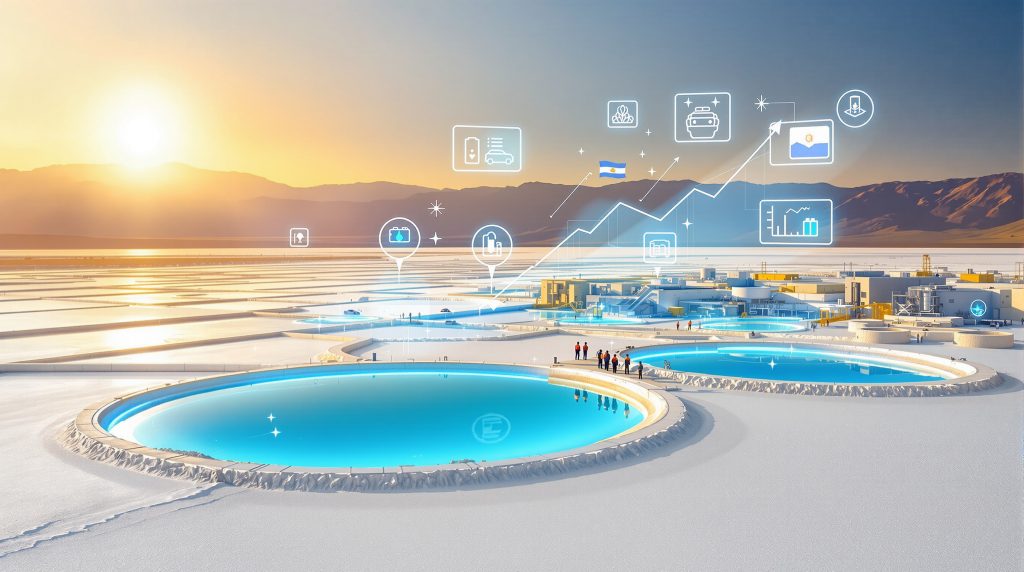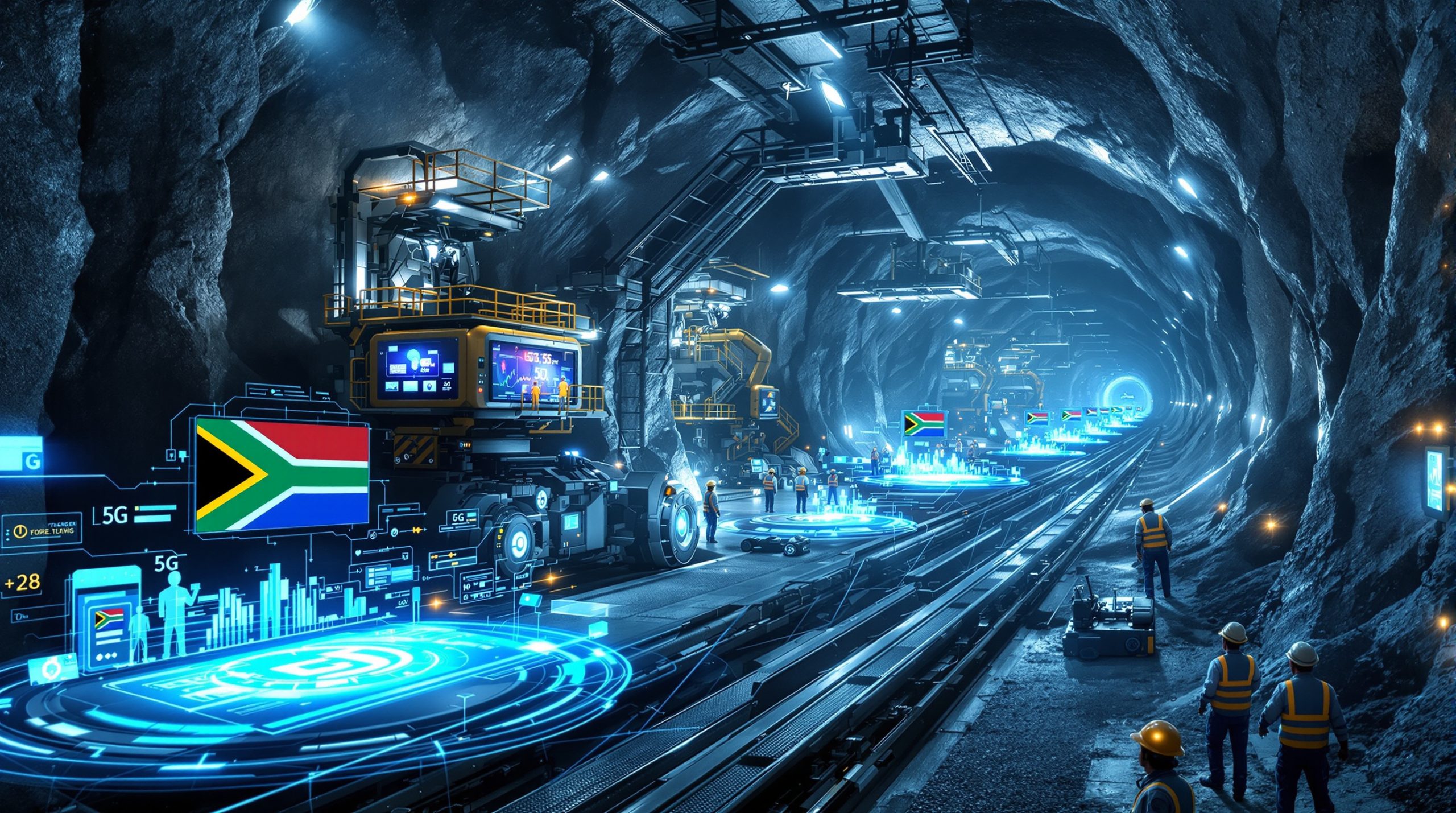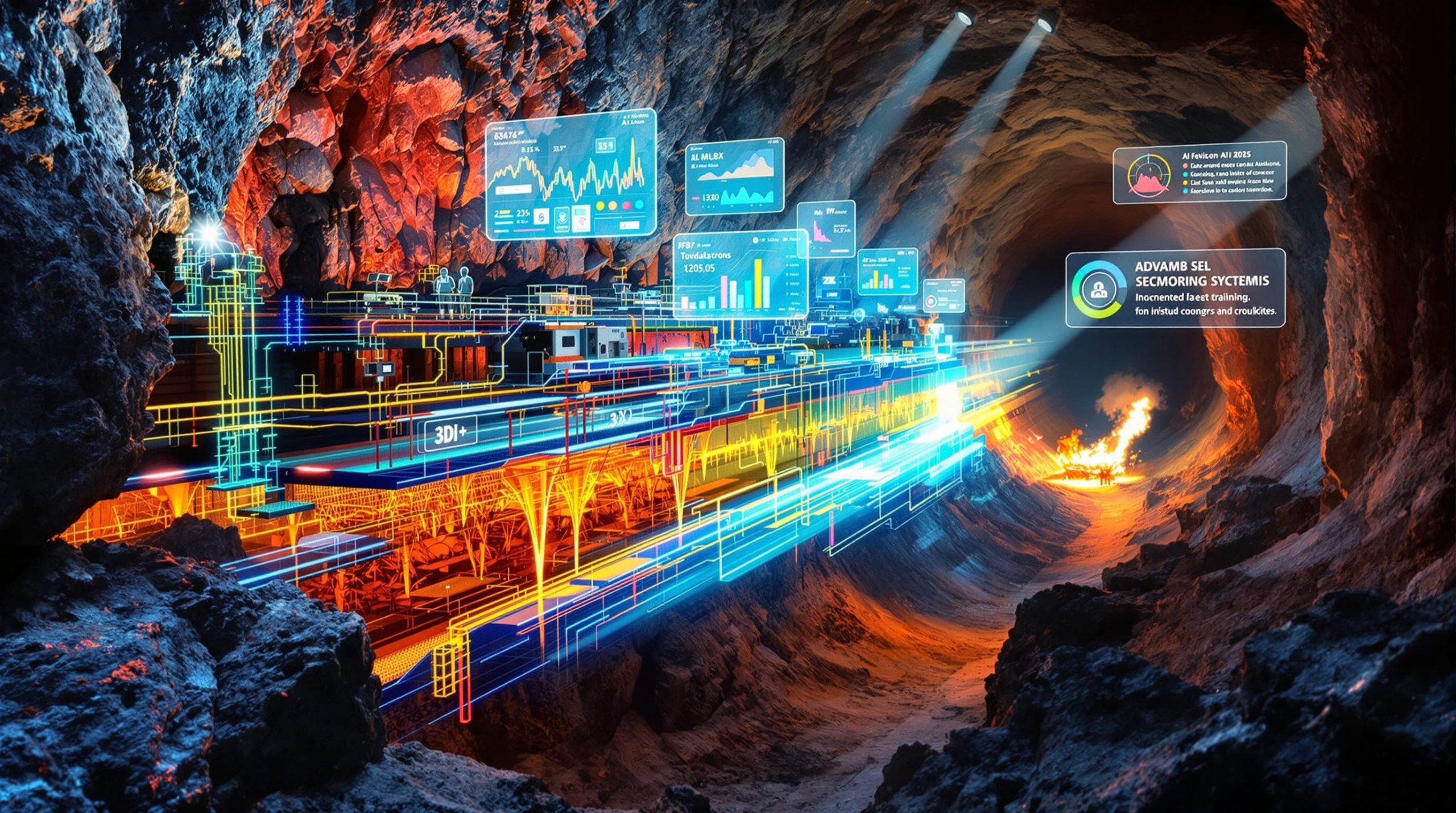The Strategic Importance of Catamarca's Lithium Resources
Catamarca province has emerged as a cornerstone of Argentina's lithium industry, positioning the country as a key player in the global transition to renewable energy. Located within South America's "Lithium Triangle," Catamarca hosts some of the world's most valuable Argentina lithium brine insights, primarily concentrated in the Salar del Hombre Muerto and Salar de Antofalla. These natural resources have attracted substantial international investment, with the province currently supporting 14 active proyecto de litio en Catamarca at various development stages.
The geological foundation of Catamarca's lithium wealth stems from millions of years of volcanic activity and evaporation processes in the high-altitude Puna region. The Salar del Hombre Muerto, spanning approximately 600 square kilometers, contains exceptionally high-grade brine with historical concentrations exceeding 740 mg/L and remarkably consistent lithium content. Some thermal water sources feeding these salt flats contain lithium concentrations up to 1,000 mg/L—a worldwide benchmark for natural lithium content in thermal waters.
What Makes Catamarca's Lithium Deposits Globally Significant?
The province's lithium resources stand out for several key characteristics:
-
Superior Brine Quality: Higher lithium concentrations and lower impurity levels than many competing global deposits
-
Extensive Resource Base: Total resources potentially supporting decades of expanded production
-
Geological Stability: Consistent lithium content with minimal seasonal variations
-
Strategic Location: Proximity to established transportation infrastructure and export routes
-
Favorable Mining Environment: Supportive regulatory framework and growing technical expertise
These advantages have attracted major international mining companies seeking to establish long-term lithium production capabilities in one of the world's most prolific lithium-producing regions.
Major Lithium Projects Transforming Catamarca's Economy
Fénix Project: The Established Production Leader
The Fénix operation in the Salar del Hombre Muerto represents Catamarca's flagship proyecto de litio en Catamarca. Operated by Arcadium Lithium (formed through the merger of Australia's Allkem and US-based Livent), this facility has been producing lithium since 1997, establishing Argentina as an early entrant in the global lithium market. Key aspects include:
-
Current production capacity of 18,000 tonnes of lithium carbonate equivalent (LCE) annually
-
Expansion plans targeting 100,000 tonnes per year by 2030
-
Proprietary direct lithium extraction (DLE) technology that accelerates processing while reducing environmental footprint
-
Vertically integrated operations including a downstream processing plant in Güemes, Salta province
-
Production of various lithium compounds for different market applications
The operation's expansion strategy involves several phased developments, with the first major expansion completed in 2024, increasing capacity to approximately 40,000 tonnes annually. However, these plans faced challenges in March 2024 when the Supreme Court of Catamarca ordered a suspension of construction activities following legal action by indigenous communities demanding comprehensive environmental impact assessments.
Hombre Muerto West: Galan Lithium's RIGI-Approved Development
Galan Lithium's Hombre Muerto West project achieved a significant milestone in July 2025 by becoming the first lithium-specific project to receive approval under Argentina's Large Investment Incentive Regime (RIGI). The project encompasses:
-
$217 million investment commitment formalized through Ministry of Economy Resolution 1271/2025
-
Initial production target of 4,000 tonnes LCE annually, expanding to 5,400 tonnes with improved market conditions
-
Expansion potential to 20,850 tonnes by 2027
-
Projected internal rates of return exceeding 25% based on current lithium pricing
-
Operating costs positioned in the lowest global quartile
-
6,000 tonnes of LCE already accumulated in pilot evaporation ponds during testing phases
The RIGI approval requires Galan to execute more than 40% of the minimum investment within the first two years: $31.1 million in the first year and $51.5 million in the second. The company has committed to sourcing 95.34% of its goods, services, and infrastructure from local providers—significantly exceeding the 20% minimum required by RIGI regulations.
Tres Quebradas: Chinese Investment in Catamarca's Future
Zijin Mining's development of the Tres Quebradas project in the Salar de Laguna Verde represents one of the most significant Chinese investments in Argentina's lithium sector. After acquiring the project from Neo Lithium Corp for $770 million in early 2022, Zijin has invested over $600 million in development activities. The project features:
-
Construction commencement in March 2022
-
Brine evaporation operations initiated in December 2022
-
Designed capacity of 20,000 tonnes of battery-grade lithium carbonate annually in its first phase
-
Potential expansion to 40,000-60,000 tonnes with favorable market conditions
-
Advanced extraction technology adapted to the unique characteristics of the Laguna Verde salt flat
-
Comprehensive infrastructure development and environmental management systems
-
Production scheduled to commence in the second half of 2025
The project's strategic importance extends beyond immediate production capacity, as evidenced by Triple Flag Precious Metals' acquisition of a 0.5% gross overriding revenue royalty for $28 million in December 2024, indicating strong institutional confidence in its long-term viability.
How is the RIGI Framework Accelerating Lithium Development?
Argentina's Large Investment Incentive Regime (RIGI) has become a critical policy tool for accelerating lithium development in Catamarca. The program offers substantial benefits to qualifying projects:
| RIGI Requirement | RIGI Benefit |
|---|---|
| Minimum $200 million investment | Reduced tax burdens |
| 40% deployment within first two years | Accelerated VAT refunds |
| Local content commitments | Flexible foreign exchange arrangements |
| Environmental compliance | Regulatory streamlining |
| Employment generation | Customs duty reductions |
The government's selective approach to RIGI approvals demonstrates a strategic vision for lithium development. While approving Galan Lithium's $217 million project, authorities simultaneously rejected applications from major Chinese company Ganfeng Lithium for expansion of its Mariana project in Salta province, citing failure to meet minimum new investment requirements within specified timeframes.
The approved projects under RIGI collectively represent investment commitments exceeding $12.8 billion across various sectors, with lithium mining forming a crucial component of this industrial development strategy. This regulatory framework has created a competitive environment that encourages substantial capital deployment while maintaining environmental management practices.
What Environmental Challenges Face Catamarca's Lithium Industry?
Environmental considerations have become increasingly central to lithium project development in Catamarca, particularly following legal challenges and community concerns about water resource management in the region's fragile high-altitude ecosystems.
Water Resource Management: The Critical Challenge
Water management represents perhaps the most significant environmental challenge facing Catamarca's lithium industry, given the region's arid climate and the potential for extraction operations to impact local water supplies. Key concerns include:
-
Large-scale lithium operations can consume substantial freshwater resources
-
Some estimates indicate that a 40,000-tonne annual production facility could consume 78 times more freshwater than the entire town of Antofagasta de la Sierra
-
The Fénix expansion project would require hydraulic works on the Los Patos River system
-
Potential impacts on water availability for local communities and ecosystems
-
Seasonal variations in precipitation affecting recharge rates of aquifers
Comprehensive Environmental Assessment Frameworks
In response to environmental concerns, the Catamarca provincial government developed and implemented the Comprehensive Cumulative Impact Study and Management (EGIA) framework between September 2024 and May 2025. This assessment incorporated:
-
Community participation processes
-
Integration of local and scientific knowledge
-
Expert consultations to ensure inclusive and rigorous environmental evaluation
-
Seven key monitoring and management programs covering:
- Meteorological variables
- Hydrological resources
- Biodiversity conservation
- Cultural heritage protection
- Socioeconomic impacts
- Community communication
- Adaptive management protocols
The study's findings indicated environmental stability within the Salar del Hombre Muerto system while establishing ongoing monitoring requirements to ensure sustainable development. This framework represents a significant advancement in Argentina's approach to balancing resource development with environmental protection.
Indigenous Rights and Community Engagement: A New Paradigm
The intersection of lithium development with indigenous rights has emerged as a defining challenge for Catamarca's mining sector. The legal action that resulted in the suspension of major Arcadium Lithium projects in 2024 highlighted the importance of meaningful consultation with local communities.
Legal Precedents and Indigenous Participation
The case filed by a chief of the Atacameños Native Community in 2021 alleged that the province approved mining projects in the Salar del Hombre Muerto basin without conducting proper consultation or completing adequate environmental assessments. The Supreme Court's ruling established important precedents:
-
Requirement for public organizations and the Atacama community to participate directly in environmental impact studies
-
Mandatory project oversight mechanisms involving indigenous representatives
-
Recognition of indigenous rights to free, prior, and informed consent
-
Balancing development objectives with community concerns and environmental protection
This participatory approach represents a significant shift from earlier development models that often marginalized indigenous voices in favor of rapid project advancement.
Corporate Community Engagement Initiatives
Companies operating in Catamarca's lithium sector have increasingly recognized that sustainable development requires genuine partnership with local communities. Examples include:
-
Marhen Lithium's partnership with the Ministry of Industry and Commerce to conduct specialized training programs for indigenous entrepreneurs
-
Arcadium Lithium's commitment to utilizing renewable energy integration, particularly solar power
-
Prioritization of local employment and community development programs
-
Infrastructure investments benefiting both mining operations and local communities
-
Educational initiatives to build local technical capacity
These programs reflect growing recognition that social license to operate is as critical as regulatory approval for successful long-term operations.
Economic Impact: How Lithium is Transforming Catamarca's Economy
The lithium industry's economic impact on Catamarca extends far beyond direct mining revenues, creating employment opportunities, stimulating related industries, and generating significant export earnings for Argentina's economy.
Employment Generation and Workforce Development
According to data from Argentina's Mining Secretariat, the mining sector achieved 37,850 total employment positions in January 2023, representing 7.9% year-over-year growth. The lithium subsector specifically recorded 3,957 jobs as of March 2023, marking a remarkable 58% increase compared to the previous year.
Employment in Catamarca's lithium sector encompasses diverse skill levels and professional categories:
| Professional Category | Examples of Positions |
|---|---|
| Engineering | Electronic, chemical, and automation engineers |
| Technical | Mechanical and electronic technicians, laboratory specialists |
| Scientific | Hydrogeologists, environmental scientists |
| Operational | Equipment operators, maintenance personnel, mining assistants |
| Administrative | Finance professionals, human resources, information technology |
The sector's growth has created opportunities across the skill spectrum, from entry-level positions to highly specialized roles requiring advanced education and training.
Economic Multiplier Effects
The economic benefits of lithium development flow throughout Catamarca's economy, particularly in remote regions where mining operations represent primary sources of formal employment and income. For example:
-
Marhen Lithium's Rio Grande project is projected to generate approximately $168 million in local economic impact during its development phase
-
The project will employ 700 people during construction and 200 permanent positions during operations
-
Local supply chains benefit from procurement of goods and services
-
Housing markets expand to accommodate workforce needs
-
Service industries grow to support mining operations and employees
-
Public revenues increase through taxes and royalties
These economic benefits create sustained development opportunities for communities that previously relied primarily on subsistence agriculture and traditional economic activities.
What Technological Innovations are Driving Catamarca's Lithium Industry?
Technological innovation has become a defining characteristic of Catamarca's lithium sector, with companies implementing advanced extraction and processing methods to improve efficiency, reduce environmental impact, and enhance product quality.
Direct Lithium Extraction (DLE) Technologies
Traditional lithium extraction from brines involves large evaporation ponds that require significant land area and time (typically 18-24 months) to concentrate lithium through natural evaporation. Several Catamarca projects are implementing or testing DLE technologies that offer significant advantages:
-
Reduced land footprint (up to 90% smaller than traditional evaporation methods)
-
Accelerated processing time (hours or days versus months)
-
Higher recovery rates (potentially 80-90% versus 40-50% for traditional methods)
-
Lower freshwater consumption
-
Reduced chemical usage
-
Ability to operate in variable weather conditions
Arcadium Lithium's proprietary DLE technology at the Fénix operation demonstrates the commercial viability of these advanced approaches, while newer projects are incorporating even more sophisticated systems.
Renewable Energy Integration
The remote location and abundant solar resources of Catamarca's lithium region have encouraged integration of renewable energy into mining operations:
-
Solar photovoltaic installations providing daytime power
-
Battery storage systems enabling 24-hour renewable energy utilization
-
Reduced carbon footprint compared to diesel-powered operations
-
Lower operating costs over project lifetimes
-
Enhanced environmental performance metrics for international markets
These renewable energy initiatives align with global battery supply chain sustainability objectives while addressing practical operational challenges in remote high-altitude locations.
Future Outlook: What's Next for Catamarca's Lithium Industry?
The future of Catamarca's lithium industry appears promising despite current market challenges, with several factors supporting continued development:
Market Dynamics and Demand Projections
While lithium prices have declined from their 2022 peaks, long-term demand fundamentals remain strong:
-
Global electric vehicle sales continue to grow at double-digit rates
-
Energy storage deployments are accelerating worldwide
-
Battery manufacturers are expanding production capacity
-
Supply chain security concerns are driving investment in diverse lithium sources
-
Argentina's position in the Lithium Triangle provides strategic advantages
Industry analysts project that global lithium demand could triple by 2030, requiring significant new production capacity beyond currently operating facilities.
Emerging Projects and Exploration Activities
Beyond established major projects, Catamarca hosts numerous emerging proyecto de litio en Catamarca:
-
Marhen Lithium's Rio Grande project spanning over 9,000 hectares in northwestern Catamarca
-
Lithium Energy Argentina's advancing exploration in the Salar de Antofalla
-
Multiple early-stage exploration programs across the province's salt flats
-
Potential for additional RIGI applications as projects advance toward development decisions
The diversity of international participation in Catamarca's lithium sector—including Australian, Chinese, Canadian, American, and European companies—provides Argentina with strategic flexibility while creating a competitive environment that generally results in improved terms for local communities and enhanced environmental standards.
Policy Evolution and Regulatory Frameworks
Argentina's approach to lithium development continues to evolve, with several important trends emerging:
-
Increased emphasis on environmental sustainability and water management
-
Greater recognition of indigenous rights and community participation
-
Strategic prioritization of projects with substantial local content commitments
-
Development of technical expertise within regulatory agencies
-
Balancing international investment attraction with domestic economic benefits
These policy developments suggest a maturing regulatory approach that seeks to maximize the long-term value of lithium resources while addressing social and environmental considerations.
FAQs About Catamarca's Lithium Industry
What is the current production capacity of lithium in Catamarca?
Catamarca's current lithium production capacity is approximately 18,000 tonnes of lithium carbonate equivalent (LCE) annually, primarily from the Fénix operation in the Salar del Hombre Muerto. However, this capacity is expected to increase significantly as new projects come online, potentially reaching over 60,000 tonnes annually by 2027 with the addition of Galan Lithium's Hombre Muerto West project and Zijin Mining's Tres Quebradas development.
How does lithium extraction affect local water resources?
Lithium extraction from brines requires water for processing and can potentially impact local hydrological systems. Traditional evaporation methods consume water through evaporation and processing, while newer lithium industry innovations generally have lower water requirements. The Catamarca provincial government has implemented comprehensive monitoring programs to track water usage and impacts, requiring mining companies to demonstrate sustainable water management practices before receiving operational approvals.
What benefits do local communities receive from lithium mining?
Local communities benefit from lithium development through employment opportunities, infrastructure improvements, educational programs, and community development initiatives. Mining companies operating in Catamarca have committed to local hiring practices, with some projects employing hundreds of workers from surrounding communities. Additionally, companies invest in training programs, healthcare facilities, and educational resources while contributing tax and royalty payments that support public services.
How competitive is Argentina's lithium industry globally?
Argentina's lithium industry ranks among the most competitive globally due to several factors: high-quality brine resources with favorable chemistry, relatively low operating costs, improving infrastructure, and supportive government policies. The country currently ranks as the fourth-largest lithium producer worldwide, with substantial growth potential as new projects enter production. The RIGI framework has enhanced Argentina's competitiveness by providing fiscal stability and investment incentives for large-scale projects.
What environmental safeguards are in place for lithium mining?
Environmental safeguards for lithium mining in Catamarca include comprehensive environmental impact assessments, water monitoring systems, biodiversity conservation programs, and regulatory oversight. The Comprehensive Cumulative Impact Study and Management (EGIA) framework established in 2024-2025 provides an integrated approach to environmental management, considering cumulative impacts across multiple operations rather than evaluating projects in isolation. Companies must demonstrate compliance with these requirements throughout the project lifecycle, from exploration through closure.
Want to Invest in the Next Major Mineral Discovery?
Discover significant ASX mineral discoveries the moment they happen with Discovery Alert's proprietary Discovery IQ model, which transforms complex mineral data into actionable insights for investors. Understand why historic discoveries can generate substantial returns by visiting Discovery Alert's dedicated discoveries page and begin your 30-day free trial today to position yourself ahead of the market.




